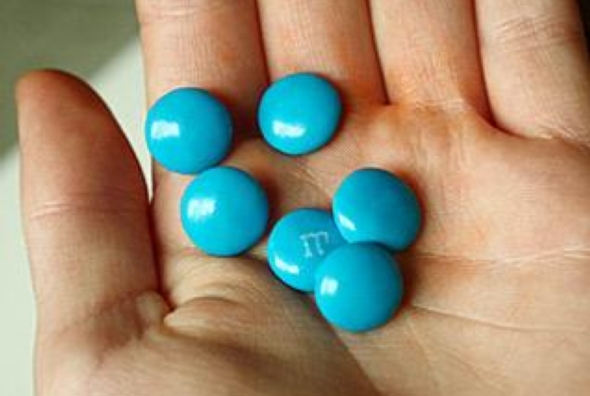
Almost 2 years ago, AnonHQ’s Tiobe reported on some of the more pronounced foods presenting dangers to our health. Listed were ten of the FDA approved ingredients found in our foods, ranging from bread to GMO corn and cereals. But rather than continue on with the banning of some of these foods, it seems our food corporations have lobbied hard, swaying our governments’ to retract their initial standing. This is an overview of what’s happened since Tiobe’s article in 2014.
1. Olestra/Olean
Already banned in the UK and Canada, Olestra is a fat substitute that can cause severe labor like pains, uncontrollable diarrhea and other food poisoning like symptoms similar to dysentery. There has been another call to ban Olestra in the US in the last 6 months – but still yet to occur. The majority of countries still use Olestra.
VERDICT: Improving…slowly.
2. Genetically Modified Corn and Soy.

Once banned in many countries, GMO Corn and Soy are fast making their way onto the shelves of nearly every supermarket, In 2014, it was reported that “many Americans favor labeling foods” containing GMO products; and to this day this is unchanged. However, the labeling debate is still as intense as it was two years ago, with only few wins. GMO Corn and Soy “dominate the US market,” and the likes of Greece, France and Algeria, who remain steadfast against GMOs, may soon buckle under the weight as their economies suffer from other external events. As of Jan 13th 2015, the EU lifted the ban on GMOs, allowing “national governments to impose their own restrictions.”
VERDICT: Stable, but leaning towards worsening.
3. Potassium Bromate
An ingredient used to reduce baking time, and linked to various cancers. At the time of Tiobe’s article, it was banned in Brazil, Canada, China, the EU, Nigeria, Peru and South Korea. It is also banned in the UK, but continues to be an FDA stamped ingredient for the United States. California, however, by law must label the product. Japan resumed its use in baking in 2005, and continues to do so.
VERDICT: Stable in banned countries. Worse for the United States.
4. Azodicarbonamide
It sounds nasty and it is nasty. This potential killer is a trigger for asthma and other allergies, which can lead to anaphylaxis and possibly death if not treated quickly. In 2014, it was banned in several countries, the UK and Australia included. Today, again, the FDA allows it, and in the United States Subway chain, the bread contains this deadly chemical.
@flyorra, Australian Subway® bread does not contain Azodicarbonamide. All of our relevant nutritional info can be at http://t.co/h2saMBBYgJ
— Subway Australia (@subwayaustralia) February 11, 2015
VERDICT: Stable.
5. Butylated Hydroxyanisole (BHA) and Butylated Hyrdoxytoluene (BHT)
From food to cosmetics, BHA and BHT are present. The FDA still approves this nasty that has been said to cause more cancers. If a person has trouble metabolizing these additives, it can cause health and behavioral changes. Allergic reaction to cosmetics has been recorded, and the International Agency for Research on Cancer classifies it as a potential carcinogen. Reproduction can also be affected. The EU now prohibits its use, alongside the Commonwealth nations and Japan. The State of California also requires labeling to show its use in products, such as cereals and chips and sausages, however, as per usual, the FDA favors its use amongst other cancer causing agents.
VERDICT: Good for the world, minus the United States.
6. Recombinant Bovine Growth Hormone (rBGH)
The American Cancer Society warns us about it. Many countries across the world have banned its use. The FDA continue to advocate its use in our primary US and Australian cattle industries. Though some links to cancer remain unclear, in the past, prostate, breast and colorectal cancers have some relationships between the use of antibiotics in cows and meat/milk consumption. It is important that current research also sees a similar trend with soy milk – but could that be to do with GMOs? Only time will tell.
VERDICT: Worsening.
7. Blue Dye #1

This is another nasty, which even the FDA issued a warning about its use in 2003. As reported by Tiobe in 2014, this dye, still approved in the U.S., can still be found in everything from alcohol to canned vegetables, food colorings, soups and cereal. It is now used to dye medications also. Mainly banned in the EU across the board, the active ingredient has been linked to behavioral problems in children, allergy, and more recently, so next time you eat that blue M & M, maybe suck on your blue jeans instead – it’s the same dye.
VERDICT: Unchanged and unchecked, stable towards worsening.
8. Tartrazine/Yellow Dye #5

Potato chips, cosmetics, drinks, shampoo, pet foods, certain medications, vitamins, and the list goes on. Yellow Dye number 5 has had warnings slapped on it left, right and center from the FSA – the UK’s FDA. Allergy, hyperactivity, lack of impulse control, through to asthma can all be triggered. Anyone with a hypersensitivity to Aspirin and its NSIDS family should stay away from this food coloring – it can cause similar symptoms including anaphylaxis, and hence death if not treated appropriately. Migraine, fatigue and blurred vision are other linked health problems.
It is banned in multiple EU nations, and the UK. Because of “flawed” trials to demonstrate the dangers and risks associated with Yellow Dye #5, the FDA refuses to (at this stage) acknowledge links to cancer.
VERDICT: Improving in most nations. United States: Stable.
9. Yellow Dye #6

Not to be confused with its cousin above, #6 has been linked to several cancers and behavioral problems. This synthetic dye helps our cheesy macaroni look yellow. It is up there with #5 for health problems, but include gastro upsets similar to stomach flu as well. The Yellow Dye #6 is the sulfonated version of banned Sudan 1 Dye (banned in 1918). The FDA continues to violate safety requirements by allowing Yellow Dye #6 into U.S. consumer markets.
VERDICT: Not good. Still remains in use.
10. Brominated Vegetable Oil (BVO)
This one is mainly found in drinks. The EU and Japan still remain steadfast in their bans, and a big win occurred when Coke and Pepsi announced they’d drop this carpet flame retardant from its products. Mountain Dew was another to have contained the chemical. Keep in mind, however, the FDA consider this mind numbing ingredient to be “safe.” Just be sure to check labelling when possible. This one generally, is printed on the container.
VERDICT: Good and improving.
Conclusion
The continuation of toxic ingredients in our foods is one of increasing concern. The FDA continue to flaunt what other organizations have time and again stated to be dangerous and consequential to our health. Most of these products (if not all) are considered in most 1st world nations, to be carcinogenic – at best. So why is it the FDA ignores such studies, research and government policy from the EU, UK, Australia and others?
What you can do:
Check your labeling and be conscience of what you are consuming. Grow your own vegetables where you can – a pot beside a window is sufficient for many types of foods. Be aware of how much ‘junk’ foods you consume and opt to change that. You do have the power. Now you have some knowledge. The rest is up to you.
Sources: Phys.Org, The Economist, AP Archives, International Agency for Research on Cancer, About Education, David Suzuki Foundation, American Cancer Society, Drugs.com, Scientific American, Livestrong, Feingold.org, Mayoclinic, Chemistry World.
This article ([Investigative] 10 Deadly Foods the FDA still Approve Use of in the United States) is a free and open source. You have permission to republish this article under a Creative Commons license with attribution to the author AnonWatcher and AnonHQ.com.





Its important, what you do. Thanks
You guys should really update your information. Some of this is just not true anymore, and some of it hasn’t been true for a good few years. Seriously